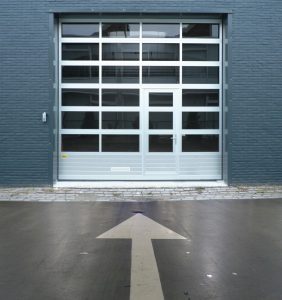
While we always advocate for hiring garage door specialists for maintenance, repairs and especially new installations – including garage door openers – we love a little DIY energy at SACS. You can check out our blog for garage door repair guides that explain some of the simpler, safe repairs you can do yourself.
However, some things are just best left to the experts- dentistry for example. Do you want your best friend doing your root canal? In the same vein, the biggest garage door fix that doesn’t fall into the DIY category is your garage door spring. It’s way too dangerous.
Think about it – that simple garage door torsion spring is the very mechanism that makes lifting a several hundred pound object a breeze. That takes an incredible amount of tension, which isn’t something you want to mess around with. One wrong move could result in serious bodily harm and even death. It sounds a little hysteric, we know – but these are real risks you carry with trying to fix or replace garage door springs yourself.
Torsion vs Extension Springs for Garage Doors
Your garage door has one of two different types of springs — torsion springs or extension springs. Torsion springs use torque to lift and lower the garage door. They are sturdier and last longer, which is why they’re also more expensive. Torsion springs tend to have 15,000 to 20,000 cycles, whereas extension springs only have 10,000 cycles.
Extension springs use tension to help the garage door opener lift and lower the door. Torsion springs also open in a much smoother, fluid motion, whereas extension springs tend to be jerky. Extension springs also require more parts, which tends to mean they’ll need more repair. Over time, extension springs may end up costing more in time, repair, replacement, and bother.
Torsion springs attach above your overhead garage door. You’ll find them at the end of the garage door trolley track just above the door’s header. These tend to be the most common springs for overhead garage doors, residential and commercial. Extension springs are on the upper tracks on both sides of the door. You’ll mostly see extension springs on older, 2-panel fold-up garage doors.
Torsion springs are the industry standard now, and even most older garage doors can be converted to an infrastructure that works with torsion springs. So, if your broken spring is the extension variety, this might be a good time to retrofit your garage door for a torsion spring system. It will be quieter, more convenient, reliable, and longer-lasting.
When either type of garage door spring breaks, replacing them is a dangerous operation that requires the tools and expertise of a professional technician.
If the spring is simply making a lot of noise, you could solve the problem yourself with some lubrication. Still, you want to avoid actually touching the spring, so a spray on application works best. If a liberal dose of silicon lubricant still doesn’t do the trick, call a professional. The spring is likely on its last legs; you want to have it replaced before it goes.
How to Visually Inspect Your Garage Door Springs
How do you know what kind of health your door’s springs are in? One DIY maintenance task that should be on your to-do list is garage door spring inspection. Every few months, take a close look at your springs. Do you notice any signs of rust or brittleness? Are the springs slack in any area? Is there a separation in the springs? How are the pulleys, cables and rollers?
If you notice a cause for concern, schedule an inspection with a garage door repair professional. It’s best to address spring problems before they actually become problems. Preventative maintenance goes a long way, especially in terms of garage door repair costs.
We’d also suggest you do a manual inspection a couple of times a year. Release the garage door opener by pulling on the cord that hangs down from the system. Next try to manually raise the door. Is there much resistance? Does the door remain open when it’s been raised, or does it slowly inch back towards the ground? If either of these is the case, you may have a problem with your springs.
The most obvious sign you’ve got a garage door springs repair issue is the door won’t budge at all. This could be caused by a number of problems, but worn-out springs is a common reason. Call a professional and schedule an inspection.
100% Customer Satisfaction-Guaranteed Garage Door Service for Springs
SACS GARAGE DOOR REPAIR offers local service to the Folsom, Rocklin and Greater Sacramento areas. We guarantee 100% customer satisfaction with professional service that is always courteous and thorough. Schedule an appointment online, or for emergency garage door repair, give us a call anytime of the day or night, 7 days a week.
